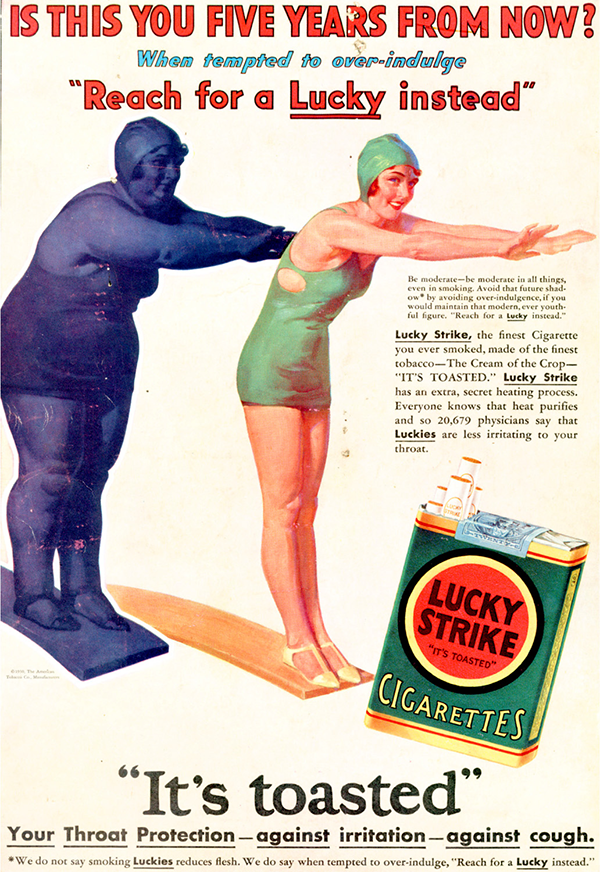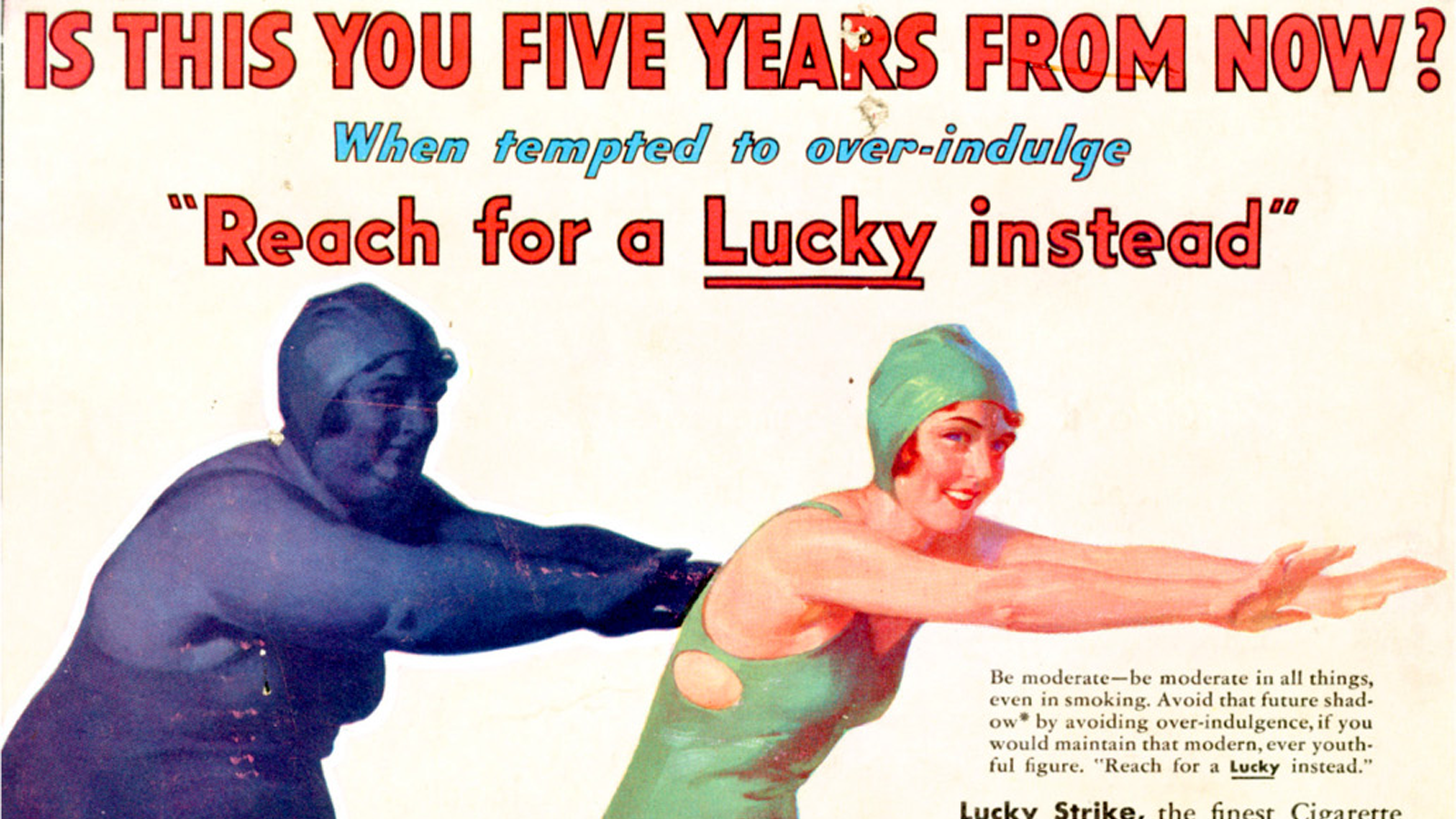By the late 1800s, public opinion was souring on cigarettes. Just look at the language people were using: the first use of the phrase “coffin nails” was in 1888, and the phrase “smoker’s cough” was coined in 1898. Even if there wasn’t definitive scientific evidence, it was apparent that something about smoking was sickening and killing smokers.
The tobacco companies, worried that widespread discussion of the obvious might turn people off the habit, turned to marketing to win back the hearts and minds and lungs of the public. Celebrity endorsements were mixed with “throat doctors” making spurious medical claims.
Nearly all of these ads were targeting men, over 50% of whom were already smokers. But in the 1920s, tobacco companies started going after women, too.

“Reach for a Lucky” ad, 1930. Courtesy of the Stanford School of Medicine’s SRITA website.
In 1928, the American Tobacco Company began running ads for their “Lucky Strike” cigarettes, specifically targeting women with the tagline “Reach for a Lucky instead of a sweet.” Often featuring thin, attractive women juxtaposed against obese ones, these advertisements pitched cigarettes as a way of guarding against “unhealthy” snacking that might lead to unattractive weight gain.
The ads were phenomenally successful. Almost overnight, Lucky Strike cigarettes became the #1 cigarette brand in the United States, their sales increasing 300% in just one year. The percentage of women smokers in America jumped from 5-6% (1924) to 12-16% of women (1929), an increase of at least four million new women smokers. While other cigarette brands had begun targeting women too, Lucky Strike’s unparalleled rise to cigarette stardom implies that their “cigarettes for weight loss” ad campaign had a fair amount of impact.
In 1930 Lucky Strike dropped the “. . . instead of a sweet” to appease candy makers, but continued pitching cigarettes as a way to curb overeating. And even after the campaign finally ended, the social destigmatization of women smoking was almost complete. By 1950, nearly half of American women were smoking. Unfortunately, there are no good obesity statistics going back that far, so we’re left simply to wonder whether this “diet” even worked at all.
As an interesting footnote, old-school advertising is still boosting Lucky Strike sales, after a fashion. Ever since AMC’s Mad Men made Lucky Strike Cigarettes a top client for Don Draper’s fictional ad agency, Lucky Strike has enjoyed a 50% increase in sales (at a time when other cigarette companies are barely growing at all). “Diet” or no, advertising is still good business for the brand.

